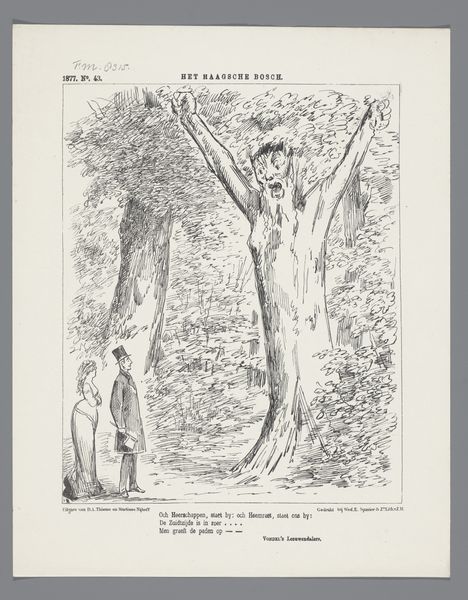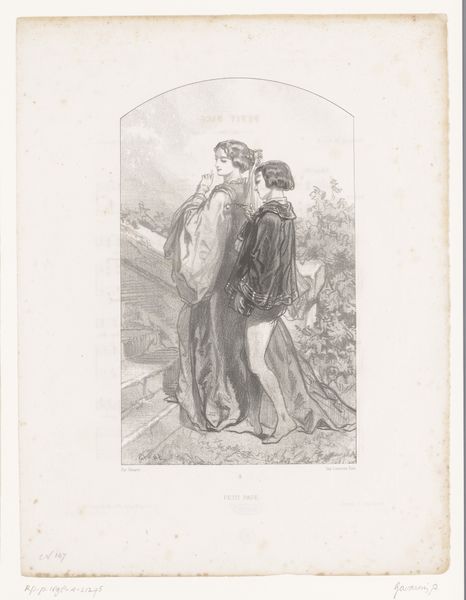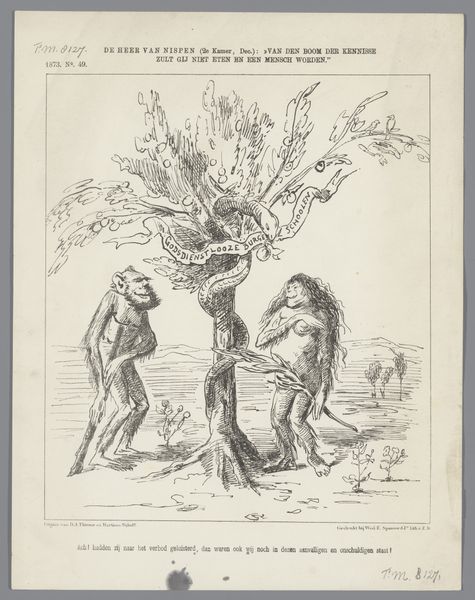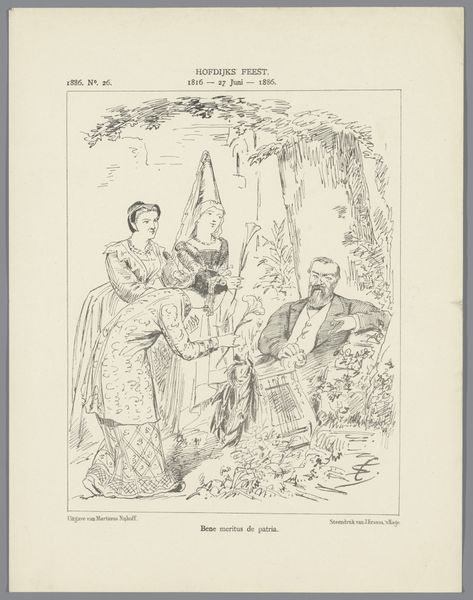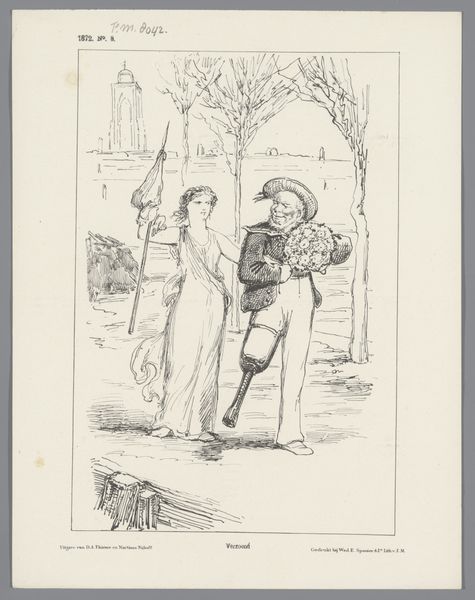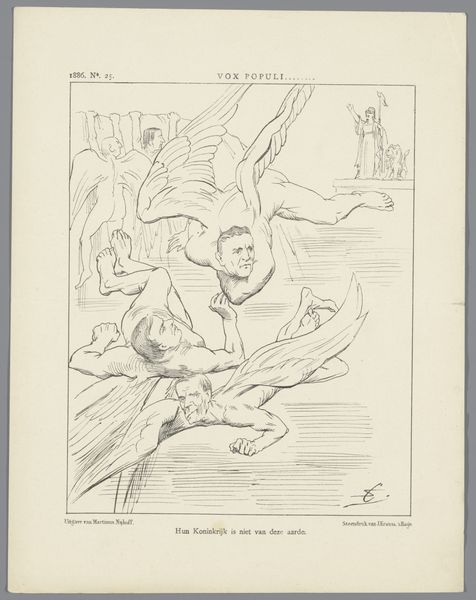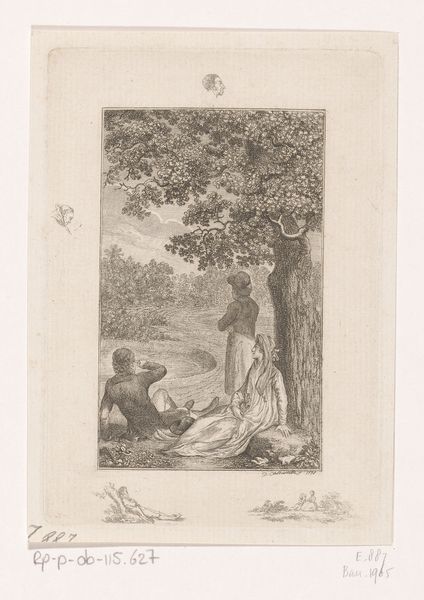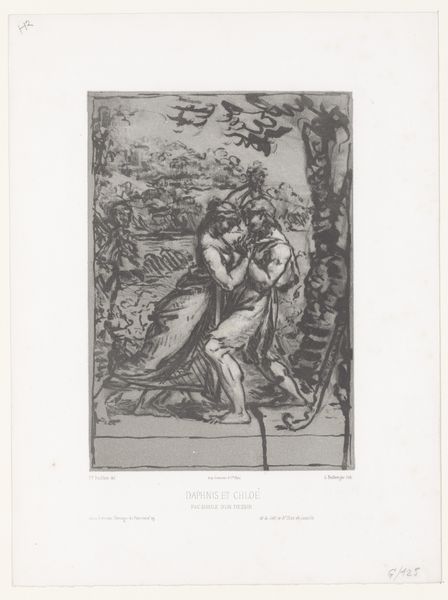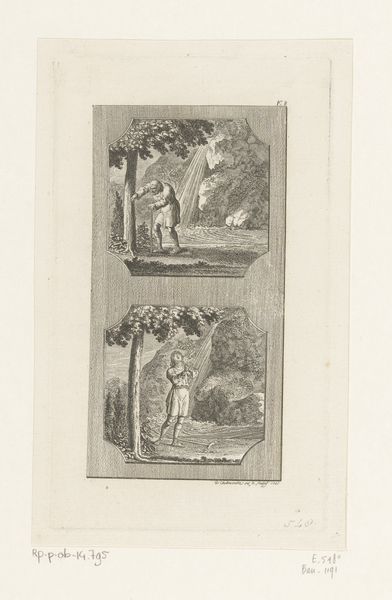
lithograph, print
#
narrative-art
#
lithograph
# print
#
caricature
#
figuration
#
line
#
erotic-art
Dimensions: height 275 mm, width 215 mm
Copyright: Rijks Museum: Open Domain
Editor: This is "Spotprent over de schoolstrijd," or "Cartoon about the school struggle," made in 1887 by Johan Michael Schmidt Crans. It’s a lithograph, and the figures are so delicately rendered, even though it’s a political cartoon. It feels a bit… unsettling, honestly, seeing this biblical scene used for satire. What can you tell me about its imagery? Curator: Well, it's interesting you pick up on the unsettling nature of the work. Look at Adam and Eve; their stance is familiar from religious art, yet there is something amiss in the context of a political statement. Notice how the tree is labeled "KENNISSE," knowledge. How do you think the viewer in 1887 would have understood this symbolism in relation to the school struggle? Editor: I'm guessing “school struggle” refers to debates about education. So, knowledge, represented by the fruit, is the point of contention? Was it about who controlled education—the church or the state? Curator: Precisely. This lithograph uses the story of the Fall as a metaphor for the conflict. See how the serpent is entwined around a sign reading "ONDERWIJS" - instruction? Consider how this caricature appropriates a powerful religious narrative to comment on contemporary politics. Editor: So the cartoon is suggesting that wanting knowledge, in this case state-controlled education, is a kind of original sin? Using religious imagery this way seems very pointed. Curator: Yes, exactly! It critiques the desire for knowledge outside traditional religious confines, portraying it as a dangerous temptation, much like Eve's. The artist leverages the emotional weight of the Genesis story to sway public opinion. Do you find this effective or manipulative? Editor: A bit of both, perhaps. It certainly makes a statement! It is clever how such well-known iconography could be employed in the political sphere. Curator: Indeed. Visual symbols possess remarkable power to transcend time, reflecting enduring human concerns. Hopefully, this provides insights into how symbols become a vehicle for both historical memory and cultural transmission. Editor: Absolutely. I will now be more attuned to those visual cues. Thanks for opening my eyes to that.
Comments
No comments
Be the first to comment and join the conversation on the ultimate creative platform.

